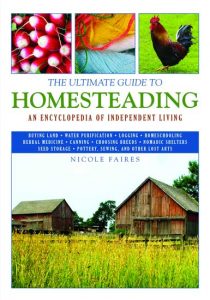Learn what to look for when buying a draft horse, including different types of draft horses, breed types, horsepower, and more.
What to Look for When Buying a Draft Horse
- First you need to know how to handle and care for a horse. If you don’t have any experience with horses you need to take a class or ask a horse person to give you some beginning knowledge.
- Consider what you can pay, and what you need the horse for. Buy within your range, but get the best you can. Also, make sure you do your research on the breed of horse and make sure it is suited to the work you want to do, whether it is riding or plowing.
- Is the horse calm and sensible, but alert? Is he submissive but not timid? Pay careful attention to the horse’s behavior around his owner and around you. The horse should be friendly. Think about spending lots of time with this horse and whether you will work well together.
- Is the horse in the right condition to do the work you have for it? You should always get the horse checked out by a vet for health and for recommendations on what the horse is able to do, just as you would if you were buying a car.
- Does it move smoothly and balanced (not stiff or crooked)? This is another thing the vet can look for, but you can learn to watch the way horses walk and recognize conformation, or good walking gaits.
- Does it have any bad habits? If so, don’t get it. First of all, it doesn’t matter if the owner is honest about the habits. It’s not worth the problems.
- Is the horse good with your level of experience? With such a powerful and unpredictable animal, it’s not a good idea to learn as you go. For your first horse, sometimes getting an older, patient, and boring horse is the best.
- If you are going to ride it, is it your size (heels shouldn’t go past underline)? Not only will a mis-sized horse be difficult to ride, but also it will be more difficult for you to handle.
Choosing the Type of Draft Horse
There are stallions, colts, geldings, mares, and fillies. The stallion is obviously the untouched and virile stud that gets other people’s mares pregnant when he gets loose. Beginners should not even consider having one, and really the only purpose for having one is for breeding. A colt is a young male horse, which means that he will eventually be a stallion or you will have to pay for gelding, which can be expensive. A gelding is an ex-stallion who has been castrated.
Today there are the options to “proud cut” the stallion leaving testosterone-producing tissue, or “rig,” in which they retain one testicle. Both of those options makes your stallion more manly, but also more difficult to handle. The gelding is generally the gentlest, even more so than mares because if a mare is fertile she has a cycle every three weeks which makes her have a sort of PMS, but at least she can give you foals.
Ways to Buy a Draft Horse
Private Treaty
Seller sells directly to buyer. It may take longer to find the horse you want and the price may be higher.
Breeding Farm
A farm that breeds horses for sales may have an auction or sell all the time. Make an appointment if they sell all the time.
Auction
A way to sell off stock quickly. Good and bad horses are sold, so you have to be really careful. Read the terms and conditions.
Draft Horse Prices
- Weanling (under 1 year old) $500-$2,500
- Yearling (1 year old to 2 years) $1,000-$6,000
- Two-year-old (2 years to 3 years) $1,500-$10,000
- Riding horse (3 years and up) $2,000- $20,000
- Draft team (matched w/ harness) $6,000 – $20,000
- Thoroughbred foal for racing $5,000- $50,000
- Thoroughbred 2-year-old $50,000-$3 million
- Thoroughbred stud $100,000-$3 million
Draft Horsepower
1,200-pound Horse
- 180 pounds for 10 hours, and brief moments of 1,800 pounds.
1,600-pound Horse
- 200 pounds for 10 hours, and brief moments of 2,400 pounds.
2,000-pound Horse
- 220 pounds for 10 hours, and brief moments of 3,000 pounds.
*A 1,600-pound horse is more efficient than any other size, and has enough overload ability to break logs loose (the 2,400 pounds).
Draft Horse Breeds
Belgian
Mature early, and relatively low maintenance. Dominant color is chestnut/bay, and white socks and blaze or stripe is desirable. Average 17.3-18.2 hands high. Can weigh 2,800 pounds, but averages 2,100 pounds.
Clydesdale
Gentle and enjoy people, common color is bay; preferred markings are white socks and blaze. Averages 16.2-18 hands high, and weigh 1,600-1,800 pounds (stallions can weigh up to 2,200 pounds).
Fell
Black, brown, bay, or gray, without much white. Averages 13.2 hands.
Fjord
Very gentle, long-lived, agile, and intelligent. They are usually a brown dun color with a zebra-like stripe on the back. Averages 14-14.2 hands and between 900-1,200 pounds.
Haflinger
Cooperative, with chestnut coloring. Ranges from 52-59 inches tall, weighing an average of 800-1,300 pounds.
Percheron
Calm disposition and intelligent. Usually black or gray, no markings. Averages 16.2-17.3 hands high. Weighs 2,700 pounds or more, averages 2,000 pounds.
Shire
High endurance and patient. Black, brown, bay, or gray with blaze and white socks. Have feathers on legs. Averages 17.2 hands, and between 1800-1,200 pounds.
Suffolk
Gentle, high endurance. Chestnut color with white on face and feet. Averages 16.1 hands or more.
Welsh
Reliable and small, any color. Section A ponies do not get taller than 12.2 hands, Section B ponies do not exceed 14.2 hands.
More from The Ultimate Guide to Homesteading:
Excerpted with permission from The Ultimate Guide to Homesteading: An Encyclopedia of Independent Living by Nicole Faires. Copyright 2011 by Skyhorse Publishing, Inc.





